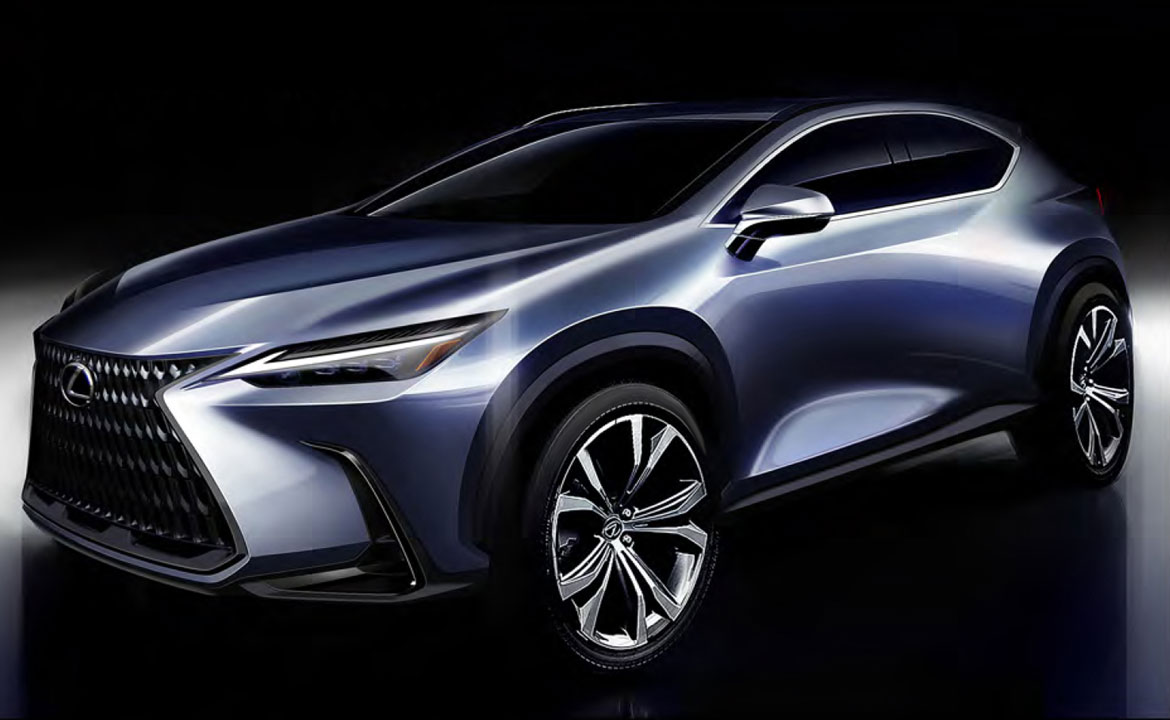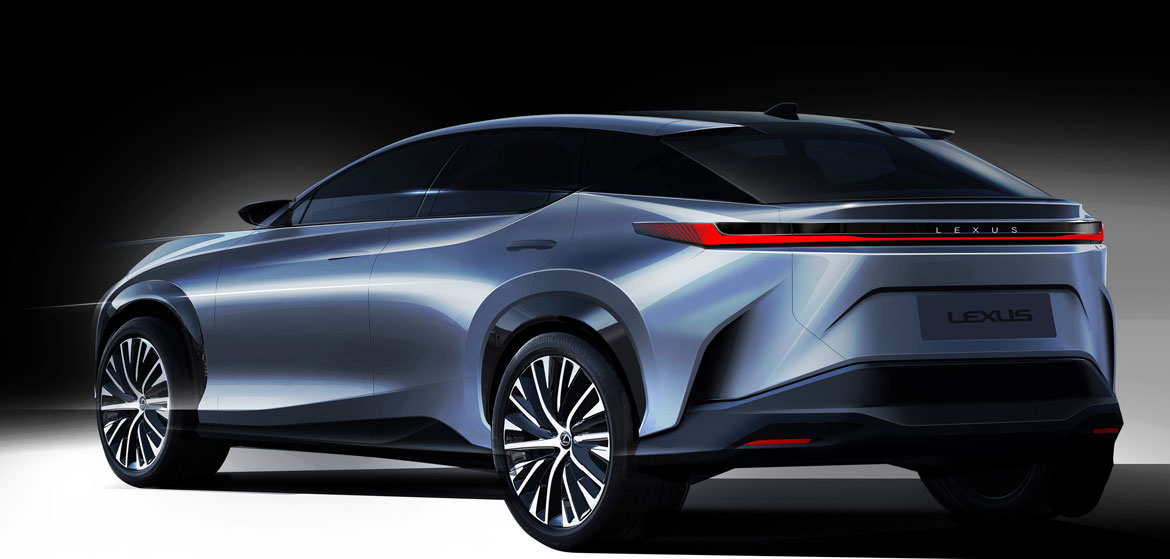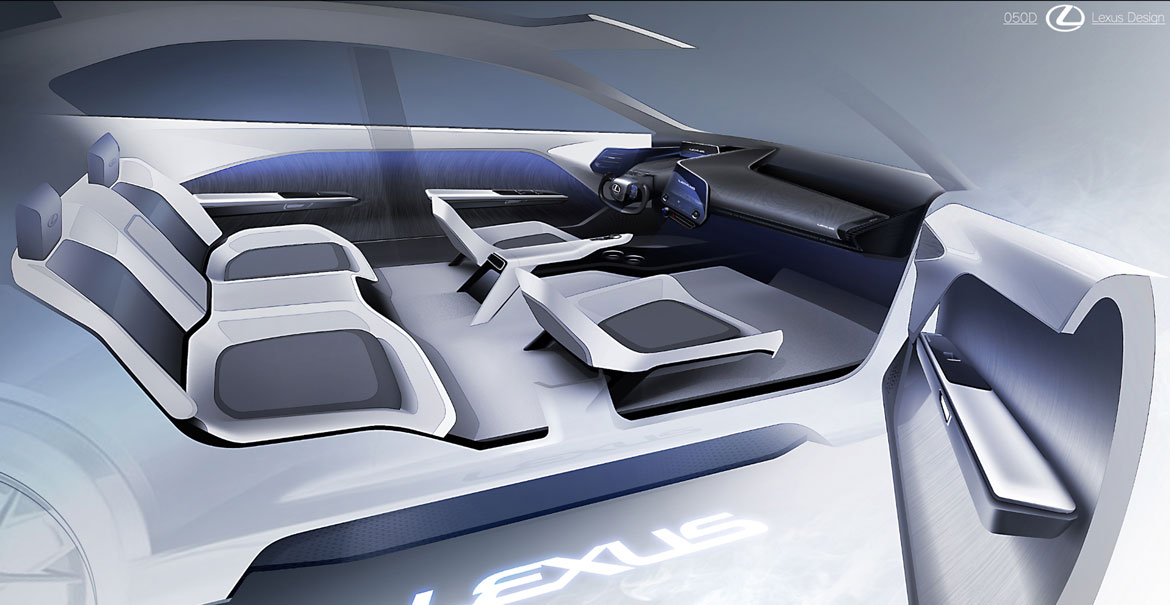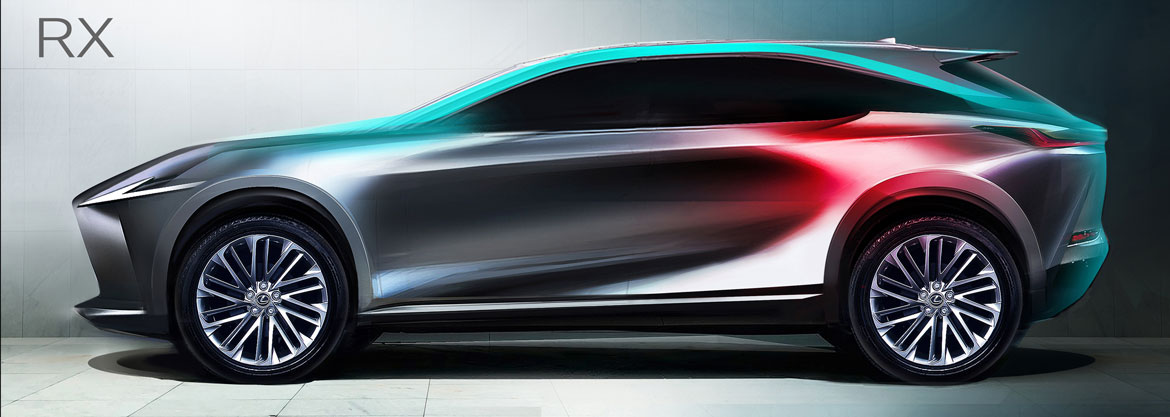It’s easy to say “New Chapter”. It is another thing to give it a shape and, in order not to betray this innovative exercise, Koichi Suga has designed not one but three SUVs. At the head of Lexus design for four years, he has seen realised his new design philosophy, with which the Toyota group’s prestige brand moves away from the sedate image that accompanied it. He started with the NX, now in its second generation, continued with the RZ, the Japanese brand’s first fully electric SUV and, while waiting for new non-SUV models, concluded with the fifth series of the RX flagship.
NX focuses on driving dynamics
Thinking about the new NX, in collaboration with designers Tadao Mori (Project Chief), Tsuneo Kanasugi (Lead Exterior) and Masaki Motozaki (Lead Interior), Suga came to the conclusion that the most important among the many functions of a car was the driving function: “The dynamics of driving and the consequent design were fundamental to its entire development.” A man of no half measures, he took advanced driving lessons and obtained the expert driver’s licence: “Driving repeatedly around the test circuit I had to re-evaluate my driving style and, analyzing driving and performance, I had the confirmation that the proportions dictated by the package are the decisive element: based on the distribution of the weights they determine the driving dynamics.”
The importance of proportions
Here then is the “Functional Beauty”, enriched with “a unique character based on proportions”. Part of that uniqueness, aimed at a more agile and sporty appearance, in addition to the longer wheelbase and the reduction of the rear overhang, is the silhouette of the passenger compartment: a uniqueness due, in the previous model, to the apex of the roof that was above the head of rear passengers. “A necessity – observes Suga – as the battery and the fuel tank were located under the rear seat, which consequently was quite high: with the new TNGA platform it was no longer so, but we kept the profile so as not to change that unique character.”
The evolution of styles
The spindle-shaped grille remains, albeit more vertical. And in the new RX the spindle motif not only remained, but was even borrowed for the shape of the bodywork by the designers who worked on it: Jota Kusakari (Project Chief), Nozomi Hirai (Lead Exterior) and Hisato Sawada (Lead Interior). Even the electric RZ, much more streamlined due to the absence of a combustion engine and therefore with a much lower front and without the large grille, has to some extent appropriated the spindle as the theme of its design. “The RX – explains Suga – has maintained its role as a pioneer of luxury SUVs, with a very simple design and extensively revised proportions. It has lost the wedge shape in favour of a more horizontal attitude and has fewer character lines.
RZ, the first electric model
The RZ uses the new e-TNGA platform, made for electric cars. We eliminated the front spindle but brought that idea to the car body. In order to express with our design a powertrain that offers different traction for each of the four wheels, we have placed the wheels in the four corners.” A new experience for the team of Tetsuo Miki (Project Chief), Daichi Kimura (Lead exterior) and Hiromi Yagi (Lead interior). In summary, as Suga explains, the three cars “have in common a new attention to proportions, a simpler and more beautiful design, a captivating and soft surface treatment, but not without a sharp and crisp appearance in the Lexus tradition, thus avoiding being too classic or too trendy because we know that fashions change quickly. We wanted functionality, which, however, would be boring without emotions.”
The interior reflects Oriental hospitality
There is no lack of oriental soul in the new Lexus. Thus, for the driving position and the instrumentation, the watchword is Tazuna, a Japanese expression that indicates a man firmly holding the reins of the horse. In the RZ, this concept is taken to the limit with the choice of a steering wheel in the shape of an airplane’s yoke, operated by wire and therefore with no mechanical connection to the steering. Another fundamental word is Takumi, the handcrafted finish with high quality products that helps to make people feel at ease, according to Omotenashi hospitality standards. All words that, in the Lexus “New Chapter”, firmly flank the imperative of “Functional Beauty”.
(Full article in A&D n. 256)
















